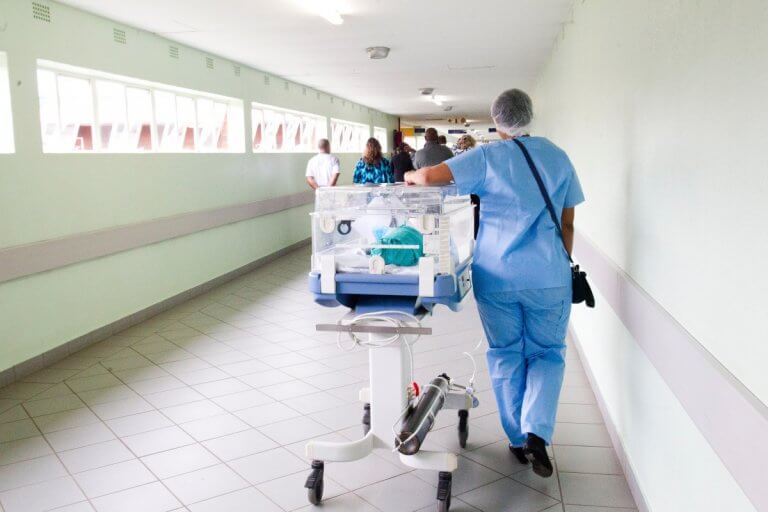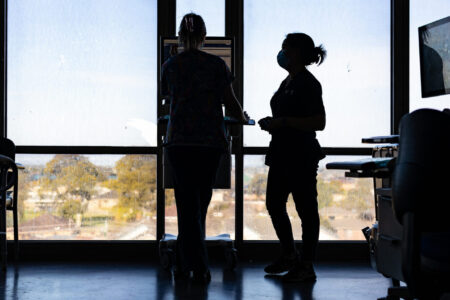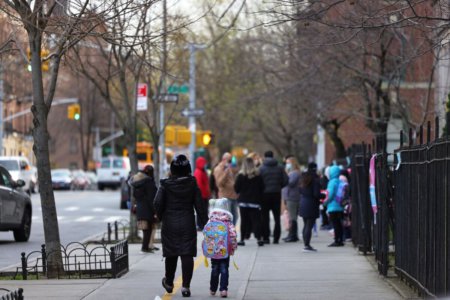
If you plan to study in Australia, you may have caught wind of recent changes to the country’s international student policies.
For starters, the Immigration and Citizenship Ministry of Australia has capped the number of international students allowed to 270,000 annually. For comparison, the country welcomed 1,095,298 international students in 2024.
Additionally, the government has increased the minimum savings requirement for international student visa applicants to 29,710 Australian dollars (US$19,350), which is intended to cover 12 months of living expenses for the primary applicant.
But don’t let this deter you from taking a shot regardless. If you intend to enter the healthcare industry — particularly nursing — then your dream to study in Australia may still come true.

Becoming a registered nurse wasn’t exactly in Queenie Wong’s books, but it gave her a path to earning her PR in Australia. Source: Queenie Wong
Study in Australia — the country needs nurses
With a global shortage of healthcare workers, being a registered nurse would mean you could easily get your foot in the door of the Australian workforce. Nurses are on the combined current list of eligible skilled occupations created by the Australian Home Affairs, which denotes which industries have shortages that immigrants could fill.
The numbers don’t lie; the Australian healthcare sector is expected to face a shortage of 71,000 nurses by 2035. The country has struggled to provide and retain enough locally-trained nurses, even as the population ages and healthcare demands increase, so they’ve turned to international talent.
In early 2025, the government announced that it would fast-track working applications from six countries — Singapore, the UK, Ireland, the US, Spain and the Canadian provinces of British Columbia and Ontario.
Application times would be cut to as short as one to six months, down from the current processing times of nine to 12 months or longer.
The NSW Nurses and Midwives’ Association, which represents nurses in the most populous state of New South Wales, said a new cohort of nurses from countries such as Singapore and the UK would be “extremely welcome”.
“We would be very grateful that these nurses want to work with us,” says the association’s head, Ms O’Bray Smith, in an interview with The Straits Times. “We could learn from them and their different ways and policies. It would feel like a great addition to our workforce.”
In short, nurses are highly sought after by the Australian government. And with 9 of the top 50 universities for nursing being located in Australia, students are spoiled for choice.
Take Monash University, for example. It’s ranked 24th globally for nursing, and even offers pathways for those without a related background to pursue a fast-tracked programme to get into the industry.
Just ask Queenie Wong, who graduated with a bachelor’s degree in science studies, but took up Monash’s intensive two-year nursing degree – the Master’s in Nursing Practice. It allowed her to graduate with a professional nursing qualification and jump straight into work, earning the experience she needed to qualify for permanent residency.
“I genuinely think Monash was one of the best universities I could get into, so the opportunity alone was great,” says Wong. “I considered going to Scotland, but being able to get into Monash and graduate was also no easy feat. So, although I do think about the possibilities, I’m still happy with the choices I’ve made so far for my career.”
Additionally, those wishing to stay on and build their careers in Australia will have the support system and opportunities they need to thrive. Anne Louise Story, a 23-year-old nursing graduate in Australia, says, “As a nurse, there are a lot of opportunities around and there are various areas to work in which can all be completely different to each other.”
“I think Australia is a good place to work as there’s a good healthcare system in place and there are so many different opportunities to learn and to do further studies,” adds Story.
How to become a nurse in Australia
Upon completing their nursing courses, students must register with the Australian Health Practitioner Regulation Agency (AHPRA) and pass a skill assessment with the Australian Nursing and Midwifery Accreditation Council (ANMAC).
Once the skill assessment is passed, nurses can apply for visas such as the:
- Subclass 189 – Skilled Independent Visa
- Subclass 190 – Skilled Nominated Visa
- Subclass 491 – Skilled Work Regional (Provisional) Visa
Visas will be granted based on a point system:
- Age
- Educational Qualifications
- Points for Professional Year
- Points for NAATI- Credentialled Community Language
- Points for 2-Year Study
- Points for English
- Points for Regional Study
- Points for Work Experience
- Points for Specialist Educational Qualifications (STEM)
- Points for Partner
The minimum to secure one of the visas above is 65 points. There are also employer-sponsored visas available, such as:
- Subclass 494 – Skilled Employer Sponsored Regional (Provisional Visa)
- Subclass 191 -Permanent Residence Skilled Regional Visa
- Subclass 186 – Employer Nomination Scheme Visa
These three visas will put you on the pathway to permanent residency, as long as you’ve worked for three years in Australia, and have a sponsoring employer.
For more information, check this website out.
View this post on Instagram
Want to know more about nursing?
For those interested in pursuing a nursing degree to study in Australia, you may be wondering what a day-to-day life looks like for registered nurses.
Wong is more than happy to share. While her time at Monash prepared her for most of her experiences, she had to learn to navigate the industry the hard way.
“You wouldn’t know nursing until you’ve seen what it’s like in an actual day-to-day ward environment. It’s definitely different from what university professors tell you,” said Wong. “They don’t prepare you for the people you work with, the ward managers, budget cuts, and how they affect the entire healthcare industry, that’s for sure.”
A morning shift for Wong starts bright and early at 7 a.m. on the dot. After morning handovers, she gets to work assisting patients with their breakfast if needed and administers medication as required. She also takes patient vitals and monitors them for signs of deterioration while attending to buzzers and additional requests. On a good day, she gets to head off home around 3:30 p.m.
“The mornings are usually the busiest. Depending on the wards, you’ll probably see 1:4 or 1:5 nurse-to-patient ratios,” she said. “Sometimes it can even be 1:3.”
When she’s on an afternoon shift, she works until 8 p.m., when the night nurses come in and take over. On an overnight shift, Wong says a nurse would have to attend to potentially up to 10 patients.
“It’s quite polarising, being a nurse,” Wong said. “On one hand, you could have touching moments with patients, where they express their heartfelt gratitude for the work we do. But at the same time, you could have patients threatening to harm you. I had a patient curse me out and threaten to punch me once because they didn’t have free television, and we (the nurses) were strongly encouraged to attend a session with the hospital psychologist after.”
Disclaimer: This article was last updated on June 11, 2025.










